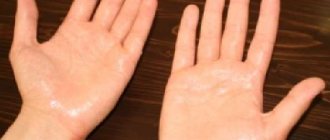Shopaholism is an unconscious attraction to making irrational purchases. Psychology classifies this phenomenon as a type of addictive behavior, the main feature of which is the irresistibility and impulsiveness of the emerging desire to acquire something, even completely useless. What are the causes, symptoms and types of this deviation? How to distinguish a shopaholic from an ordinary buyer? Is it possible to overcome shopaholism and get rid of this addiction?
Shopaholism: what is it?
Despite the fact that this phenomenon is known to the average person under the name “shopaholism,” science does not know such a term. But she is familiar with the term “oniomania .
IMPORTANT: “Oniomania” consists of two Greek words – “for sale” and “madness”.
The interpretation itself, as we see, reveals something not entirely healthy in this phenomenon. Of course, all people periodically passionately desire to purchase this or that thing, purposefully save money for it and carefully study the options. Sometimes impulse purchases happen.
However, shopaholics rarely really need the item they buy. It’s not for nothing that the word “madness” is included in the term “oniomania” - sometimes it doesn’t even matter to a person of this type what to buy. He simply must make purchases without analyzing their goals and consequences. Shopaholism is a need, a hobby, a lifestyle.
Shopoglism is a pathological desire to buy even what is not needed.
But can oniomania be called a disease if it does not cause harm to health? However, if you think about it, it brings: in addition to an empty wallet, a shopaholic will face troubles with others and guaranteed problems with the nervous system . And the latter, whatever one may say, can already be considered an undermining of health.
In addition, it turns out that the luminaries of psychiatry began to take a closer look at oniomania back in the century before last! Emil Krapelin and Eugen Bleuler , German and Swiss specialists, tried for the first time to seriously talk about the signs of this phenomenon.
IMPORTANT: They definitely considered oniomania a disease.
Moreover, there is a direct parallel between the level of income and the number of goods purchased. Of course, it is easier for people with a high level to buy even things they don’t need in exorbitant quantities.
For people with a more modest budget, accordingly, shopaholism takes on less frightening proportions. Although some citizens even manage to take out loans for purchases that they don’t really need.
A shopaholic with a more or less large income literally overwhelms himself with various purchases
Shopping mania - prevention measures (treatment)
To prevent the need to improve your mood through shopping from turning into a mania, do not fall for any promotions and discounts, and also get rid of credit cards. Take some money with you and plan your purchases clearly. And stay away from stores.
Without shops, of course, life is boring. But don’t you think that modern stores are pursuing the goal of turning every customer into a shopaholic? Just look at the huge shopping centers, it’s not so easy to escape from them without making a purchase! And it would be fine if only the most necessary things were bought. But to complement your jeans, you will be offered T-shirts and baseball caps, and next to them are sneakers and moccasins, backpacks and hammocks, badminton rackets and flower pots. And discounts, promotions, sales...
Be carefull! Don't be fooled by advertising, and then you won't have to rack your brains about how to pay off debts or what to do with useless purchases.
Signs of shopaholism
By what signs can one determine that a person is not just sometimes harmlessly succumbing to an impulse, but is dependent?
- As mentioned earlier, shopping for a shopaholic is a hobby and even the meaning of life . He goes there whenever possible , without the goal of buying any specific thing. And as a result, he buys a lot of things that he then has difficulty finding use for.
- When visiting a store, an onioman examines literally the entire assortment. Of course, if a person decides to go shopping for a jumper, he can look at several models. However, it is unlikely that he will try on a lot of trousers, shoes, etc.
- The obsession with fashion magazines and blogs dedicated to this topic is becoming excessive. A shopaholic is only interested in trends, new products and advice on this topic. Other hobbies become secondary or completely uninteresting.
IMPORTANT: A shopaholic only likes to discuss what he has bought and wants to buy.
- If a trip to the store is unsuccessful or there is not enough money, the reaction of an addicted person is clearly different from the reaction of an ordinary consumer. Onioman becomes apathetic or, on the contrary, nervous . Even aggression cannot be ruled out. In other words, something like withdrawal occurs.
When a shopaholic cannot afford to make a purchase, he falls into apathy or begins to get nervous
- The purchasing process itself brings euphoria. As you might guess, it is not the purpose of acquiring something specific that is important. It is important for a shopaholic to experience this process itself. Moreover, as soon as shopping ends, a person quickly feels the need to again plunge into pleasant emotions.
- It is especially common for oniomaniacs to go to the store after stress. By analogy with eating negativity or smoking.
- A shopaholic easily agrees to purchase credit cards and open accounts. And he uses them at every opportunity, experiencing short-term bouts of remorse.
IMPORTANT: Hence the constant lies to everyone around and even close people. Onioman dodges in every possible way and tries to come up with a more credible story about where the money went.
How to recognize shopaholism: signs
Signs of Shopaholism
Not every person who likes to spend money is a shopaholic.
There are many symptoms that help recognize shopping addiction:
- When you go to meet your girlfriends, to the cinema, to the skating rink or to the park, you always go to the shopping center for a couple of minutes. You have no special hobbies, and therefore you are ready to spend hours looking at shop windows.
- If you are asked to tell you what is the best way to combat a bad mood, then you will say that you need to buy something every day. After all, you yourself use this method.
- As a rule, you spend much more than you plan, and therefore hide the real cost of things from your loved ones.
- You go shopping on your own, alone, so that no one sees you buying everything you see with a discount price tag on it.
- You have several identical T-shirts, three sneakers of the same model and similar handbags. But you cannot explain why you need the same things.
- You can't save up for a new phone or a trip you've been dreaming about for a long time. After all, all the money you save requires you to spend it.
How to recognize shopaholism?
- First, you ask the sellers to show you a lot, and then you feel ashamed that their diligence is not justified, and therefore you definitely leave with the purchase.
- You borrow from anyone you can, and every time you come up with fantastic reasons. And you have emptied your entire credit card and are constantly trying to pay in installments.
- When you've been to the store, it's like a failure. You don’t even understand where you suddenly spent all the money.
- Shopping brings you joy, but already at home it all goes away and you immediately start thinking about who to give it all to.
- In your closet you can often find things that do not suit your style and style.
- You don't think you have any problems. You're just a girl and that's all.
If you have at least two of the above points, then you are to some extent a shopaholic. You are constantly haunted by the desire to buy something, and it doesn’t even matter what the prices are, whether there is a need and whether there will be consequences. This addiction is comparable to gambling addiction, alcoholism, anorexia, and so on. You obviously didn't expect it to be so serious.
What are shopaholics: classification
Shopaholics can be divided into several types:
- Spontaneous - people who always deviate from the planned shopping list. Even if you have a list at hand, and even if the deviation seems small. But the magic words “sale” and “discounts” do their job. This type of shopaholic considers himself to be a bit of a spendthrift, nothing more.
Sales are something that a shopaholic will never pass by in his life.
- Conscious - these people are already aware that shopping calms them down. They understand that they depend on shopping during times of worry and stress. However, the scale of the problem is also not realized.
- Purposeful - and these citizens do not even fully understand how much they spend. They just buy everything they see without remembering their money limit.
- Shop socialists vote with all their might for equality in shopping. That is, they diligently look for the same things as those around them. Do you like your colleague's handbag? I urgently need to buy exactly the same one! Your friend got a cute scarf? A shopaholic will have no peace until he sees its analogue on sale.
IMPORTANT: By the way, they depend on advertising more than others.
- Shop hoarders sincerely consider themselves to be thrifty owners who certainly will not succumb to shopping addiction. However, from time to time they buy up certain goods in batches. As a rule, promotional ones. They believe that this is how they save money. In fact, a lot of sellers are pleased and do not have time to use all the acquisitions.
By collecting a whole bunch of similar products, shopaholics sometimes think that they are saving money.
- Shop-sufferers strive to reward themselves for all life tragedies of large and small caliber. Moreover, he prefers to suffer surrounded by exclusively luxurious things. Can't indulge in depression in a illuminated bathroom? Then the onioman will fill the closet to capacity in order to somehow console himself.
- Shop maniacs - these oniomaniacs will proudly walk past sales and steadfastly accept calls to buy one product and get a second one for free. They think they know how to save money, and this is true. However, as soon as they find their fetish thing , all rationality goes to hell. The stash is instantly emptied, and the inability to purchase another bracelet, luxury cosmetics or perfume for the collection
IMPORTANT: True, this type of shopaholic is considered the least problematic and the most amenable to re-education.
If a shopaholic sees a dream item, he is ready to tear it out almost with his teeth
Characteristics of a person prone to shopaholism
In modern society, there has been a significant increase in shopaholism among teenagers. Psychologists first spoke about shopaholism as a disease back in the 20th century. It originated in the American society of material consumption, and spread widely throughout the world, promoting stereotypes of success, harmony and a happy life, dependent only on shopping, imposed by the media [1]. In Italy, Spain and Scotland, about 50% of teenage girls became addicted to shopping. According to psychiatrists, 10% of the world’s population already suffers from shopaholism. And this figure tends to increase rapidly, because... modern technologies greatly facilitate the shopping process [2]. Adolescence and young adulthood constitute the largest group of consumers. A teenage child has the right to earn his own pocket money, which he can spend on himself. That is why a whole segment of trade aimed at teenagers began to stand out on the market [3].
Based on the data of A.E. Orlova, one fifth of the population of developed countries is unable to resist buying a new thing, regardless of its need [2]. According to research by S.A. Morozova, E. Kraepelin, M.A. Petrova, L.V. Levina, N.V. Dmitrieva, shopaholism is a form of non-chemical addictive behavior, which is accompanied by a manic dependence on buying new items in order to satisfy one’s needs; it may have similar symptoms to other addictions . Ts.P. Korolenko notes that all addictions arise through the sequential alternation of certain psychological states, when strong experiences, such as emotional pain, loneliness, are replaced by the opposite, i.e. positive sensations, thereby the addict remembers the process of acquiring this method of generating a positive state. “Addictive behavior develops as a subjective fixation on what a person considers safe and soothing. The painful events of life in a person who has neither the strength nor the ability to overcome difficulties give rise to an unbearable thirst for their instant elimination or immediate happiness” [4, p. 37]. Since shopaholism is an addiction, then buying a thing is a reason for feeling happiness or an attachment. The development of shopaholism is influenced by stereotypes that were formed in early childhood. The sensations that children experienced when receiving gifts or visiting stores were well remembered by them, forming an attachment, i.e. strong emotional fixation when receiving a “coveted prize” in a store, which can lead to the formation of shopaholism.
Adolescents, due to their psycho-age characteristics, are prone to addictive behavior. This personal tendency has certain components that manifest themselves gradually:
– Lack of motivation for success, to the point of refusing to consider oneself a subject of activity;
– Lack of formation of the function of predicting behavior;
– Low level of self-awareness, as well as lack of reflection skills;
– Low level of self-esteem to the point of rejection of the image of one’s own “I”;
– Self-defense from activities when difficulties arise;
– Contradiction between self-esteem and level of aspirations;
– Tendency to escape from reality in a situation of frustration [1, p. 10].
R.V. Ovcharova o [5, p. 135]. V.N. Marchenko, A.V. Niyaskina, V.R. Shilov believe that the main cause of shopaholism, like other addictions, is stress. According to them, anyone can become a shopaholic, regardless of their income and status. Consequently, not all people who enjoy visiting stores are shopaholics. A shopaholic is, first of all, someone who periodically, without thinking about the significance, cost and necessity of an item, buys it; the purchase is a kind of temporary relief from stress [3].
According to the research results of A.E. Orlova, when a person is carried away by shopping, his ability to think sensibly and rationally decreases, and at the same time, tension in the parts of the brain that control emotions and pleasant sensations increases significantly, so a person may experience strong excitement and euphoria during a purchase. However, after making unnecessary purchases, many people repent, feel regret, grief, and disappointment. O. B. Simatova and K.V. Granin believe that one of the psychological characteristics characteristic of people prone to addictive behavior (including shopaholism) is a high level of anxiety. It is noted that increased anxiety causes increased motivation to avoid and escape from reality, which increases the risk of addiction [6].
There are many reasons for the development of shopaholism. To a greater extent, these are psychological reasons: childhood mental trauma or a person’s predisposition to depression, which begins to manifest itself in adolescence. The reasons for the passion for shopping can also be a person’s personal psychological and social problems [2].
Ts.P. Korolenko gives the following reasons for shopaholism:
− at the hormonal level – lack of serotonin, which provides a positive emotional background;
− at the psychological level – lack of satisfactory relationships with parents and children, experiencing dissatisfaction with one’s own personality, insufficient self-realization;
− at the social level – a lifestyle declared by modern society, compliance with which correlates with a fairly high status and social success of an individual, but provokes alienation, loneliness, and lack of mutual understanding [1].
As individual reasons for dependence on purchases of C.P. Korolenko identifies feelings of guilt, internal insufficiency, conflict and suppression of rage [1]. N.V. Dmitrieva, Ts.P. Korolenko, L.V. Levin says that a shopaholic’s feelings of guilt and shame arise from the inability to control their own desires and actions [7]. Shopping addiction, according to A.E. Orlova, is accompanied by a temporary loss of control over one’s actions, from which the conclusion is drawn that this is a mental deviation from the norm. Some psychologists say that shopaholism is a form of unhealthy addiction, such as to alcohol, drugs or other surfactants [2]. According to the definition of S.A. Kulakov, shopaholism for many people is a substitute addiction, such as those dependent on alcohol, who have been replaced by an addiction to shopping as an easier one. On the part of society, shopaholism was chosen and even approved as “the lesser of two evils” [8].
Based on data from Yu.V. Zheleznyakova, at the heart of almost all addictions lies an intrapersonal conflict or contradictions that a person cannot cope with without resorting to escaping reality. Therefore, addiction is a personality disorder, which is expressed in the inability to structure one’s consciousness with internal stimuli [9, 10]. O. B. Simatova emphasizes that “the main motive of a person prone to addictive behavior is an active desire to change his unsatisfactory mental state. At the same time, an individual with an addictive behavioral focus has a significantly reduced activity in everyday life, filled with demands and expectations” [11]. Shopaholism can develop as an opportunity for some kind of escape from reality, i.e. away from everyday life, into a world where shopping can be fun and something that helps satisfy one's mental state.
Psychological analysis of shopping addicts, according to M.A. Petrova, discovers that they are characterized by serious problems associated with self-esteem and a feeling of isolation in the world around them. Shopping addicts use the act of shopping as a tool to solve various psychological problems. Shopping helps many shopping addicts feel more confident and increase their self-esteem [12]. The data from the psychological analysis of shopaholics can be compared with the psycho-age characteristics of adolescents prone to addictive behavior according to C.P. Korolenko.
Signs of shopaholism as an addictive process C.P. Korolenko presented in the form of the following components: compulsion to uncontrolled purchase of unnecessary items, which, moreover, often cannot be paid for; growing internal tension, which immediately disappears after making a purchase; a passing feeling of joy when purchasing; feeling guilty after making a purchase. [1]
V.N. Marchenko, A.V. Niyaskina, V.R. Shilov identifies types of shopaholics and their distinctive feature:
- “A spontaneous shopaholic does not consider himself an addict at all; he calmly visits stores, intending to buy something specific, but during the visit he can buy something unplanned, something that he liked or was tempted by its low price.
- A conscious shopaholic makes a conscious shopping trip, the main goal of which is to lift one’s mood or relieve stress.
- A purposeful shopaholic is not aware of his actions, and upon returning home he cannot remember and clearly explain what exactly his money was spent on.
- Reasonable shopaholics - they purchase items and services necessary for everyday life or for personal care, but in much larger quantities than necessary.
- A true shopaholic buys everything he sees in the store, without realizing what he is doing and why.” [3]
Factors in the development of anxiety include relationships with parents, peers, intrapersonal conflict, guilt, psychological problems, loneliness and depression. Despite the fact that anxiety is a psychological characteristic that influences human behavior. It represents the experience of emotional discomfort, confusion, with the expectation of trouble, with a premonition of impending danger. ABOUT. Simatova believes that an optimal level of anxiety is necessary for a person to effectively adapt to reality [11].
According to M.A. Petrova, a person prone to shopaholism is characterized by a cyclothymic type of character accentuation. People of this type are characterized by wave-like changes in mood and behavior. Consequently, a joyful event awakens their thirst for activity, gives rise to vivid emotions, and gives rise to talkativeness. Something sad leads to sadness and depression, to slow reactions and lethargy, to lethargy and lack of initiative. The demonstrative type of accentuation is also highlighted, since, in her opinion, it is characteristic of persons with a high level of propensity for shopaholism. The main features of the demonstrative type are: egocentrism, extreme selfishness, insatiable thirst for attention, the need for veneration, approval and recognition of actions and personal abilities. He is driven by the desire for leadership, the need for recognition, the thirst for constant attention to his person, the thirst for power, praise, the prospect of not being noticed depresses him [12].
Low self-esteem, it can also be identified as a factor of anxiety, but this is one of the reasons for shopaholism, since low self-esteem causes difficulties in communication and adaptation of a teenager to the conditions of modern society, then shopping gives the illusion of power, i.e. increasing self-esteem through shopping and the polite attitude of sellers. Increasing the assertiveness of a teenager in alternative educational environments based on the development of independence is the basic conditions for successful adaptation to the environment, the determination of a positive “I-concept”, successful self-realization, which allows one to prevent addictive behavior in the form of shopaholism [13].
Thus, a person prone to shopaholism has the following characteristics: an increased level of anxiety, low self-esteem, cyclothymic and demonstrative types of character accentuation, a feeling of loneliness. The purposeful activity of a deviantologist in the field of preventing the growth of shopaholism among adolescents will make it possible to change the vector of behavior through the correction of characteristic personality traits that predispose to this addiction.
Causes of shopaholism
Why does this painful craving arise?
- It’s not for nothing that they say that everything comes from childhood. If a child grew up in a family in need of money, he will almost certainly want to fill this gap from childhood as an adult. You just have to start earning good money - and now you have a shopaholic in front of you.
- The other side of the coin is being spoiled in childhood. Parents who have the opportunity to buy their child whatever he wants, but do not have the time or desire to raise him, often pay off. Instead of contact with the child - another toy. Having become an adult, such a person will, out of habit, begin to fill the spiritual emptiness with material things.
- Also at risk are children of authoritarian parents, who can instill insecurity. Such uncertainty and complexes lead directly to oniomania. A person begins to compensate with material things for the absence of something spiritual.
IMPORTANT: It’s not for nothing that researchers unanimously point out that shopaholics lack serotonin, the hormone responsible for the feeling of happiness.
Shopaholism is often a consequence of a lack of the hormone of happiness
- However, a spiritual emptiness that needs to be filled can also arise in adulthood. Problems in your personal life and at work are fertile conditions for oniomania.
- – we should not exclude this powerful lever influencing us from the outside. Especially to sensitive natures. Marketers know how to put pressure on the right points, resorting to extremely successful slogans and images. Advertising can be intrusive and even aggressive. In addition, it is everywhere - television, radio, huge entertainment shopping centers, billboards at every step.
- The desire to rule - few people think about this, but such a factor is not uncommon. To understand this reason, you need to remember how sellers treat customers. They flatter, strive to serve at all costs, and show respect. But shopaholics sometimes lack just such manifestations in their direction.
IMPORTANT: Psychologists assure that even branded bags given by stores support this illusion of power.
Branded store packages unusually attract shopaholics
- The desire to get adrenaline - and when shopping, a lot of it can splash out. A feverish search, the desire to get a thing at any cost, the search for financial resources - perhaps all this is no less energizing than playing sports.
- The desire to gain freedom - a shopaholic in such a case consoles himself with the thought that he is getting what he wants . Not what friends advised, or what is necessary - why not a feeling of independence? But it, as you might guess, is deceptive.
Reasons for the development of shopaholism
The prerequisites for the consolidation of the shopaholistic model of addictive behavior should be sought in childhood. The reasons may be:
- the low-income family in which the future shopaholic was raised, due to which he was forced to put up with a shortage of toys and other necessary things;
- authoritarian parents, stingy with expressions of love and affection;
- satisfying all the child’s whims in order to replace communication with adults with gifts.
In addition, shopaholism can develop in an adult with the right upbringing. In this case, psychology sees the reasons for the reckless thirst for shopping in the following factors:
- dissatisfaction with one’s life, social position and status;
- exposure to marketing gimmicks and advertising industry products;
- a firm belief in the existence of a correlation between the acquisition of a certain thing and positive changes in personal qualities - increased status, sexuality, attractiveness, etc.;
- the desire to assert one’s importance and have the desired material wealth;
- the need for increased self-esteem, a surge of adrenaline, and introduction to the world of wealthy people and beautiful things.
How to get rid of shopaholism: methods, recommendations
But any bad habit can be fought. And here's what you can do in case of shopaholism:
- Choose only cash . No credit cards! They create a feeling of inexhaustible supplies. A specific piece of paper in your wallet that you can feel with your fingers can sober up much more than any training. Besides, taking out a loan thanks to your existing card is so easy and paying it off seems so far away! And the thing of your dreams is already before your eyes.
Any shopaholic should remember once and for all that credit cards are evil for him
- However, cash will also not save you if there is a lot of it. You need to train yourself to take a small amount. If you have a regular debit card, you should make sure that there is not a lot of money left on it either.
- taking a time out from time to time For example, if you come up with the idea of purchasing a specific expensive product, you need to promise yourself to return to buying it a little later. This trick will allow you to cool down a little.
IMPORTANT: The purchase may not take place due to this timeout. In fact, as soon as an item disappears from sight, it almost immediately becomes uninteresting to a shopaholic.
- As soon as the exciting words “discount”, “sale” and other promises of happiness begin to loom nearby, you need to turn away. Except in cases where the sale item is truly necessary.
- The list is something that a true oniomaniac doesn’t care about from a high bell tower, but that he must introduce into his life. Promising yourself in advance, no matter what, not to deviate from the shopping list. To bring success closer, it is better for this list to be held in the hands of a reliable companion , free from the shackles of shopaholism.
A shopaholic can even make a shopping list on his phone, which is always at hand and definitely won’t get lost
- Women should take with them not only a list, but also a pocket calendar. And at the first attacks of oniomania, immediately remember what day of the cycle it is. About 10 days before the start of menstruation, hormonal changes occur , which are fraught with emotional outbursts . Consequently, also rash actions.
- If you need a specific thing, you should refrain from jumping joyfully in its direction at the first glance. It is better to analyze several options for such a product - compare styles, colors and other characteristics. This will allow emotionality to give way to rationality and cool down a little.
IMPORTANT: But in no case should you talk about what other thing will be combined with the planned one!
- A new collection is not a reason to run headlong after it. Later, the price of things from it will certainly fall. At the same time, there will be time to think about the feasibility of the purchase.
An item from the new collection causes a crazy stir among shopaholics, but often it is not necessary to purchase
- Receipts and a truthful list of expenses are what you need to save and keep in front of you. Periodically it is worth studying them, comparing and drawing conclusions. Such visibility can be sobering.
- It would be a good idea to ignore stores and advertising sources from time to time . No catalogues! It’s better to turn off advertising on TV and install an ad-blocking program on the Internet. And online stores are completely evil for shopaholics. The ease of making a purchase is destructive.
- Since shopping for addicted people is akin to entertainment, you need to go from the opposite. That is, try to begin to perceive this activity as something routine and uninteresting.
IMPORTANT: Finding a new hobby is a great idea. It might make you more interested in shopping and relieve stress better.
- Turning to specialists is something you should not be shy about. So, if the cause of oniomania is depression, the doctor should prescribe antidepressants. Lack of self-confidence can be eliminated by motivating literature and visiting a psychologist.
- And in order to establish the source of the problem, it is worth keeping a log. With each attack of shopaholism, you need to fix the trigger. Analyzing your own behavior will help you understand which direction to move.
- Anonymous clubs - the example of other people inspires even if they are sitting right in front of you. And they understand you 100%.
An anonymous club will help shopaholics see that they are not alone.
Some famous people call themselves shopaholics - for example, Christina Aguilera, Sarah Jessica Parker. Comedies are made about shopaholics, like the film of the same name, in which Isla Fisher starred. Nevertheless, it is important to understand that shopaholism is a real bad habit, an addiction. Which can and should be fought.
Treatment of shopaholism abroad
When treating alcoholism, drug addiction and shopaholism abroad, cognitive behavioral therapy methods are often used. To eliminate oniomania, it is very important to identify its cause. For this purpose, conversations are held with the patient, when the doctor finds out what emotional problems addiction is associated with and gives recommendations on how to get rid of shopaholism, change your thinking, and not think about shopping. The cognitive method is considered one of the most effective in treating shopping addiction. The same approach is used in the treatment of drug addiction in Israel.
In Europe, for example, such a method of therapy as psychological support groups is very common. It is based on the fact that all those who have gotten rid of shopaholism gather in a group and help others fight their bad habit. Here, in addition to the course of treatment, people honestly talk about their addiction in order to analyze specific motives and actions, and they are also taught to meaningfully buy what they need. To do this, before visiting the store, group members make a list from which they cannot deviate. Credit cards and accounts are temporarily blocked so that the oniomaniac cannot resort to them, but only pays in cash. Help centers for shopaholics restrict access to online stores to avoid the temptation to make purchases.
In Scandinavian countries, psychotherapists first give patients the opportunity to cope with the problem themselves, and if this does not help, then they are treated in a hospital, where they teach oniomaniacs how to recover from shopaholism, change their views and habits.
In the United States of America, addiction treatment is carried out by switching the shopaholic’s attention to solving specific problems.
Treatment options
To treat shopaholism, societies of “shopaholics anonymous” are now gaining high popularity, as people have begun to recognize psychological disorders. Such self-help groups, which have overcome the passion for shopping, help to find stability in the soul and get rid of a bad habit. But it is common either in large cities or abroad, so most people can get rid of the disorder with prevention.
Treatment of shopaholism includes the following stages:
- The main thing is awareness of the problem.
- When you go shopping, make a list. Be sure to follow it, try to walk past unnecessary departments or shelves that contain products that are not on your list. Keep receipts and write down all your expenses to assess where, how much and what you spent the money on. Use ready-made programs or applications on your phone to make it easier to maintain such accounting and prevent you from spending large sums.
- Make purchases in cash or pay with a card that does not have a credit limit. Get rid of credit cards or close your limits by contacting your servicing bank. Set a limit on purchases.
- Before purchasing, determine the exact purpose of the item, how and where it will be used. It is better to purchase such a product the next day, having slept with the thought of purchasing it.
- If it’s difficult to refuse pleasure, give a small gift to your child or husband to coincide with some holiday. You can let off steam by buying the right product, but at the same time you will please your loved ones.
- Diversify your weekend by visiting beautiful places - parks, theaters, cinemas, concerts. Life exists outside of shopping malls. Discover new colors.
- Analyze the products and descriptions well, try not to buy spontaneously, study all offers.
- Discounts are not always a reason to buy. This is a good marketing ploy; the price during the discount period could simply be rewritten, increasing the crossed out option.
The therapeutic effect in the treatment of shopaholism can be achieved by completing a course of hypnosis, which is recognized as the safest and most effective. At this time, it is possible to form correct self-esteem in the patient, relieve fear, and establish motivation to transform the personality. With the initial stage, you can recover quite easily by changing your lifestyle a little:
- Carry only the minimum amount necessary in your wallet. Leave the rest at home or in the bank.
- Put aside the thing you like and think carefully about whether it is needed. The next day, you will most likely refuse this purchase.
- In women, thoughtless shopping can even provoke hormonal changes. Try not to overuse shopping malls during PMS to eliminate the need for purchases.
The development of oniomania in the post-Soviet space began quite aggressively, but there are few specialists in our country who would thoroughly study the problems.










